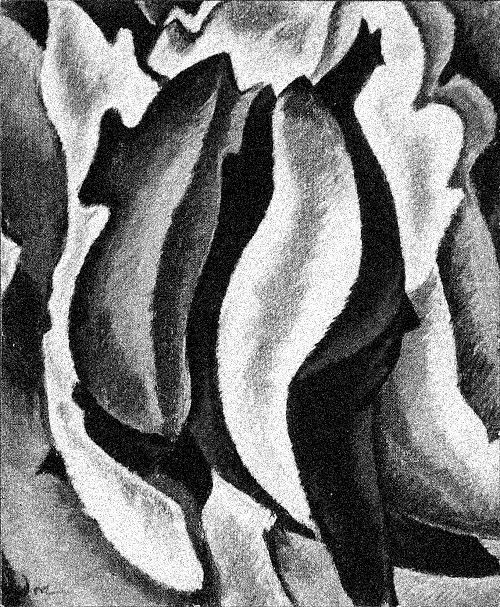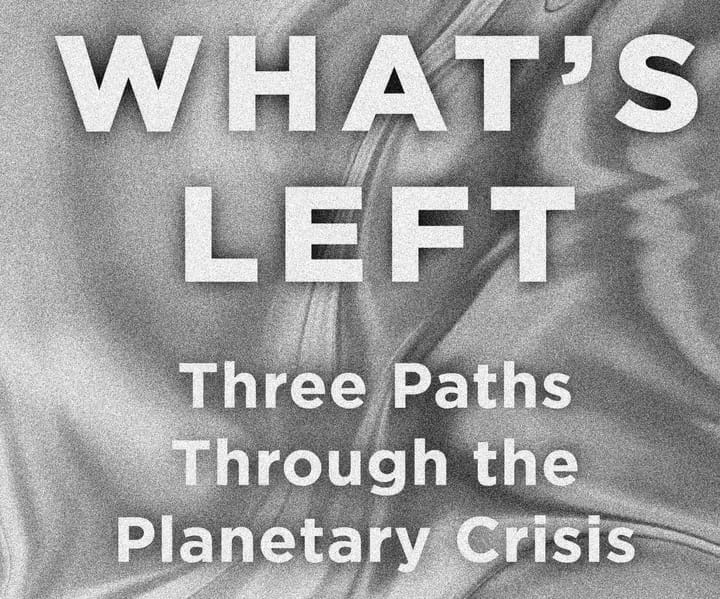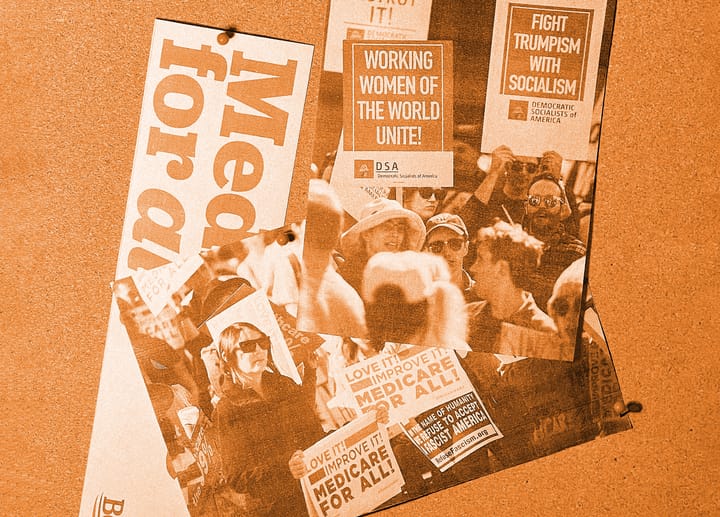Bad Air!: A Review of “We Unhappy Few” from Endnotes 5
When the present unrealizability of one’s grandiose ambitions is the misery of one’s actuality.

Perry Anderson, in Considerations on Western Marxism, presents the idea that political theorists are constrained in their theorizing by their objective conditions. The reason we don’t find the political theories of Lenin in Marx’s work, for instance, is because Marx did not live at a time when revolutionary vanguardism was possible. This perspective is well and good from the outside and indeed a basic insight of critical social theory. But applied to one’s own situation, it can become a tool of delusion, a neat justification for any particular field of possibility no matter how narrow; an inverted critical theory—not a step back to traditional theory but a step forward to the weaponization of critical theory against itself.
This dynamic is central to “We Unhappy Few,” published in the most recent Endnotes issue. The authors adopt the premise that history has eclipsed the working class as the agent of history in the Marxist sense, as it has eclipsed the strategy of Leninist vanguardism. Mass working-class institutions are no longer possible, they argue, because the real—as opposed to formal—domination of capitalism has seeped into our collective subjectivity. “The capitalism we face today learnt the lessons of those struggles and restructured itself accordingly,” they grimly conclude, foreclosing rank-and-file organizing, left populism, and other traditional strategies of left organizing (110-11). “If in earlier capitalism it had been possible for working class organisations to represent some sort of community against capital,” they go on to say, “in [this] period of real domination, capital shapes both individual and collective subjectivities” (51). No capable change-agent seems positioned to carry forward the revolution, and reorienting their politics to comport with neoliberal subjects would demand unacceptable theoretical concessions. Under these assumptions, the authors are left in the position of concluding that left organizing is futile.
From this position of left nihilism, “We Unhappy Few” presents an analysis of group dynamics, both historical and psychoanalytic, in contemporary leftist organizations. The essay opens with two case studies, taken to be paradigmatic: that of the “praxis group”, whose commitment to theoretical openness eventually leads to its dissolution in a dogmatic split, and that of the “theory group”, which, while oriented towards intimate conversation and mutual growth, eventually succumbs to exclusion and hostility. When seeking to understand the paradoxical nature of each group’s collapse in the essay’s first section, the authors take inspiration from the 1939 essay “On the Impotence of Revolutionary Groups,” written by council-communist Sam Moss. Moss argues that a pivotal dilemma confronts every would-be revolutionary group: either the group adapts to the reality of their political circumstances, thereby opening up the possibility of political agency but shedding their radicalism, or they remain committed to their revolutionary ideals, but in so doing give up the potential for realistic political engagement. Moss proposes a rather bleak solution to this paradox: one must simply wait for the masses to radicalize spontaneously in response to more dire material circumstances: “[W]hen the large masses, reacting to the compulsives [sic] of the objectively revolutionary situation, feel similarly affected, they too will band together out of the same urgency and they too will use whatever weapons fall to their disposal.” One might question, in light of current circumstances, how much more dire things need to get before leftists find a political opening. But in the meantime, “Why, then, realizing the futility of the act, do you band together into groups? The answer,” Moss concludes, “is simply that the act serves a personal need.” Summarizing Moss’s analysis in three blunt statements, the authors conclude: “So what are we? Deviants and freaks. Why do we do what we do? Because it serves a personal need. What can we do then? We can at least see the truth of the situation, perhaps” (27).
In Moss’s framing, then, leftist group work is necessarily intimate and insular. Nevertheless, the authors of “We Unhappy Few” remain optimistic that, in serving a personal need, the small leftist theory group (or “willed group”) can still develop a critical theory of capitalism. “[T]he critique of capitalist social relations involves at the same time a critique of ourselves and the categories with which we understand ourselves and vice versa,” they argue, “to question ourselves and our categories is tantamount to the critique of capitalist social relations” (60). In so doing, the authors hope, a small theory group might relate in a meaningful (if intangible) way to the eventual mass uprising which it cannot foment directly. “The idea that the small ‘willed group’ aiming to understand capitalism and its overcoming, and the spontaneous revolutionary crowd and mass action that will actually produce that overcoming, have an underlying coherence through the notion of mutual recognition is an idea that is fascinating for us,” they write, “and we will try to unpack it in detail” (57).
It is in the moment of spontaneous revolution, the essay goes on to argue, that the proper theory of communism renders itself available. Paraphrasing Marxist writer Richard Gunn in the essay’s second section, the authors admit that “outside of conditions of social revolution and struggle, mutual recognition only exists in a contradictory form, and thus, moments of such conversation [key to revolutionary action and to communism] are relatively rare and perhaps only to be approximated imperfectly” (58). They go on to imagine, however, that “[c]ommunist conversation in a revolution or situation of intense struggle erupts everywhere” (65). At the moment of spontaneous uprising, that is, the crowd adopts the ideas most salient to their revolutionary situation. This does not mean, however, that there is no place for theory and theorists outside the revolutionary moment—the mode of thinking which will be necessary to articulate the revolution in the ideological register must be maintained in non-revolutionary times. The goal for the willed group, the authors go on to conclude, is to keep itself coherent and well-functioning enough to incubate the conversations which will one day give voice to mass unrest at the moment of spontaneous revolution. Asking, “[W]hat, in the absence of revolution, might [the group’s] work consist in?” the authors answer, “we have a task of trying to think” (82). Here, the authors attempt a resolution to their own paradox: by not adapting themselves to contests for power in existing political institutions, yet not remaining completely sequestered in ahistorical theory, the communist group should develop its theory apace with changing historical circumstances—keeping the germ of “good conversation” alive so that it is ready at hand when the radicalized masses need it.
Between revolutions, then, the task for the theory group is to keep itself together and thinking. For this, “We Unhappy Few” turns in its third and final section to psychoanalyst Wilfred Bion’s theory of group dynamics to better understand how successful groups function, and what might cause them to dissolve. In Experiences in Groups, Bion theorizes that in every group, two parallel organizational structures are in fact present: the “work group” and the “basic assumption group.” The work group is the structure developed to accomplish the explicit task of the group, while the basic assumption group is a (usually unconscious) dynamic to which the group reverts in times of distress. In this framing, Bion seeks to understand how and why the basic assumptions hinder or help the work of the group.
Although the authors of “We Unhappy Few” provide a comprehensive and accessible treatment of Bion’s theory, it’s in this last section that the weak spot in the whole essay is revealed. Bion argues that a work group falls back into basic assumptions when it loses focus on the work to be done, which raises an uncomfortable possibility: maybe the problem with the unhappy few, the reason that they split and bicker and fall prey to paranoia, that they are forced to endlessly thematize their own conditions of possibility while circling a truth deferred again and again, waiting for the collective Messiah to realize it, is quite simply that they lack work, in Bion’s sense. A political organization that has given up on political organizing and concrete demands—why wouldn’t such a group be prone to dissolution?
Rather dead than caught missing a moment for reflection on their own impotence, the authors acknowledge that “one of the problems with the idea of a ‘work group’ orientated to revolution or communism is that this is clearly not a practical object for willed groups in the present. Thus the idea suggested in Bion’s group theory of ‘keeping on task’ is particularly difficult for a willed group when the tasks it orientates to—communism or revolution—will actually not be its product but rather a product of spontaneous (i.e., determined) group processes at a class and societal level” (79).
They tackle the conundrum with frictionless ease: “Bion suggested that the idea that a group acts consistently in the manner of the work group is an ‘idealised construct’ or even a ‘group phantasy’. This seems particularly true of groups nominally committed to the idea of revolution or communism” (79). There is no need for work, in other words, when “work” means getting together, largely based on personal aesthetic preferences surrounding a purported “deviancy” and “freakishness”, and telling each other the necessary lies to maintain a simulacrum of work.
The authors try to make this position seem honest through the rhetoric of sober-minded realism: “There is so much unconsidered and naive presupposition, so much evasion, illusion, and delusion, brazen mismatches between what people actually do and what they think they do, between the story they tell themselves and the reality of their impact on the world, between the grandiosity of their ambition and the misery of their actuality.” But it’s under this cover of “getting real” that the authors indulge fully in what Donald Meltzer calls “the delusion of clarity of insight”: when the scotomized field of one’s preconceptions is taken as the horizon of wisdom itself. Since there is a disconnect between the grandiosity of our ambition and the misery of our actuality, the thought goes, let the present unrealizability of our grandiose ambitions directly be the misery of our actuality. Like Hegel’s master, they possess no dialectical out: from their perch above the shifting sands of history, they can only reconcile themselves to stasis.
It is fitting that Endnotes 5 was published in the waning days of the Sanders campaign, like a dry sponge thrown into a sea of disillusionment. For those despairing that there is no more work to do, “We Unhappy Few” offers a bold diagnosis and an attractive cure: the painstaking cultivation of a future truth. From the outside, this task is rich and nuanced, prudent from foresight begat of knowledge. “Seen from the inside, influenced by the motives for the intrusion, the story is a very different one.”
■
Simon Geist is a part-time magazine writer and diagnostic tech at Die Werkstätte wo man Ideale fabriziert in Leipzig.



